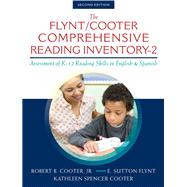Designed to help educators assess the “Big Five” components of reading instruction as identified by the National Reading Panel—phonemic awareness, phonics, vocabulary, fluency, and comprehension—the CRI is recognized as a leader in the field for its ability to ensure quick and reliable assessment of the reading skills and needs of students in grades Pre-K through 12. The groundbreaking features that made this book’s original edition a top choice of teachers and literacy coaches for many decades are continued here, along with a number of changes that make the analysis of data more efficient and increase student learning, among them a Spanish version to help educators better serve the needs of English speakers and/or English learners.










